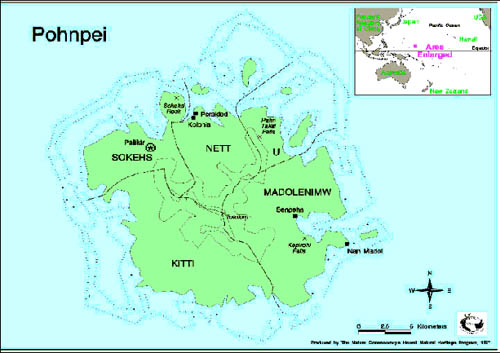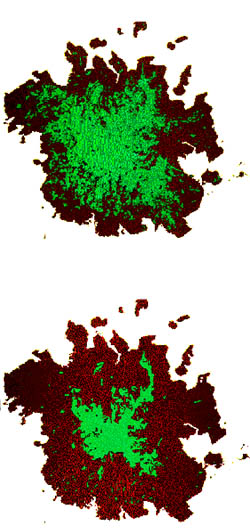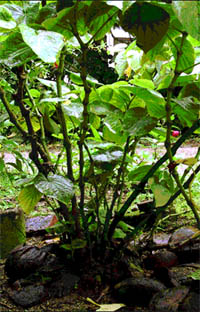 |
||
Overview Featured Research Publications
|
Watershed Management on Pohnpei:
A thesis completed for the School of
Introduction
As one of four states comprising the Federated States of Micronesia, Pohnpei is a volcanic, mountainous island with deep valleys and ridges that are covered by dense, tropical vegetation in the form of rain forests found in the interior. These upland forests consist of a mix of broadleaf, swamp, and dwarf forests and are home to an incredible amount of biodiversity with high levels of endemicity, making it one of the most diverse places in Micronesia.
Of the 767 plant species that have been recorded on the island, 34% are native to the island's upland forests. 111 plant species are endemic to the island and 90% of these are found in upland forests. In addition, sixteen percent of the island's 50 bird species are endemic to the island.
However, when surveyors attempted to mark the boundary of this reserve, communities (who had not been engaged in developing the legislation and utilized these areas for agro-forestry) turned them back. As a result, watershed management on Pohnpei evolved from a conflict situation between communities and the state government over establishment of a Watershed Forest Reserve and authority over management of the area. Today, management can be characterized by a collaborative approach in which all parties work to manage this threatened area.
The analysis concluded by identifying six key factors underlying effective, collaborative natural resource management. Analysis was based on literature review and field research in which over 40 interviews were conducted with community members, traditional leaders, state agencies, non-governmental organizations, U.S. federal agencies, municipal governments, and politicians. The results of this case study analysis provide clear lessons for the watershed management program as well as other programs and projects facing similar challenges and issues.
The analysis is available in PDF Format . Click here to download the entire analysis in a complete document (note that this is a large file).
The analysis is also available in individual chapters:
Getting Adobe Acrobat Reader for PDF Files
|
|
Home | Site Map | Search | © 2009 Ecosystem Management Initiative. Terms of Use


 To protect these critical forests, the Pohnpei state legislature passed the Pohnpei Watershed Forest Reserve and Mangrove Protection Act in 1987 creating a close to 5,000 hectare (or 12,500 acre) protected Watershed Forest Reserve. The purpose of this act was to halt the degradation of the interior forests from population encroachment (namely the planting of sakau, Piper methysticum, a traditional as well as commercial cash crop; see picture below) and to protect the watershed and water supply for the island's population. [The figures to the left show the need for this vital watershed protection: the top figure shows Pohnpei's forests (in green) in 1975 while the figure below shows the forest cover in 1995, illustrating a significant decrease in forest coverage during those twenty years.]
To protect these critical forests, the Pohnpei state legislature passed the Pohnpei Watershed Forest Reserve and Mangrove Protection Act in 1987 creating a close to 5,000 hectare (or 12,500 acre) protected Watershed Forest Reserve. The purpose of this act was to halt the degradation of the interior forests from population encroachment (namely the planting of sakau, Piper methysticum, a traditional as well as commercial cash crop; see picture below) and to protect the watershed and water supply for the island's population. [The figures to the left show the need for this vital watershed protection: the top figure shows Pohnpei's forests (in green) in 1975 while the figure below shows the forest cover in 1995, illustrating a significant decrease in forest coverage during those twenty years.] This analysis looked at three key areas by
This analysis looked at three key areas by  All photos and maps have been provided courtesy of
All photos and maps have been provided courtesy of